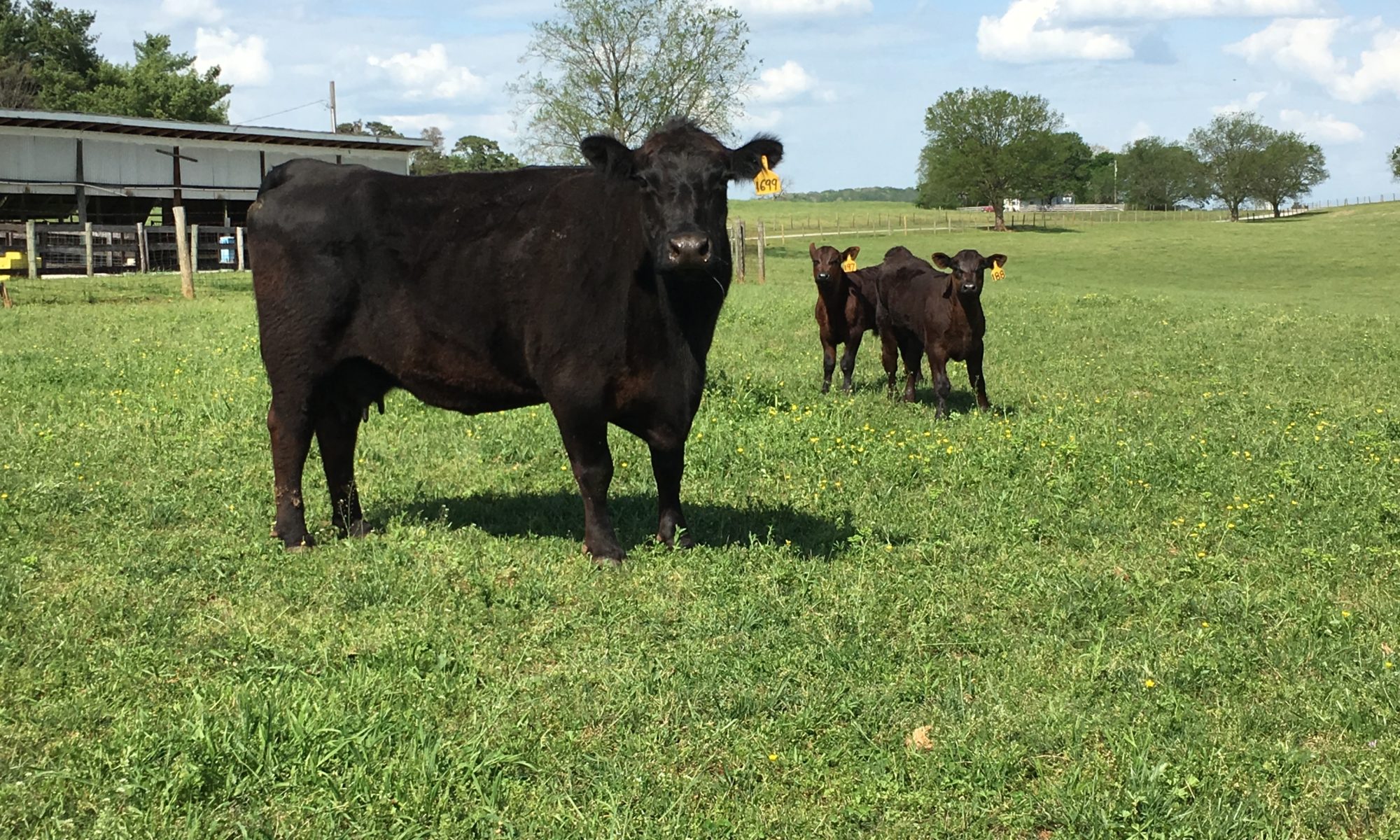

Dr. Lew Strickland
Associate Professor and Extension Livestock Veterinarian
Department of Animal Science
P: 865-974-3150
Spring calving season should be in full swing, or even over by the time you read this article! Hopefully, the season goes well for you despite the terrible weather we had back a couple of months ago. Decisions will soon need to be made on which heifers to save as replacement females. Several factors come into play in making these decisions. The current market prices, her genetics, age of the dams in the herd, cows in the herd found to be open all influence those decisions. With all the selection pressure placed on your females, it makes perfect sense to give her every chance possible to be the best replacement female that she can be.
Body Condition Score (BCS)
I’m not referring to the heifer’s score, it’s the Dam’s BCS that needs attention. Going into a cow’s ‘dry’ period just prior to calving season, an assessment of her BCS should be made and nutritional adjustments should be made. Thin cows at calving (BCS 4 or thinner) produce less colostrum, poorer quality colostrum (less immunoglobulins), and give birth to less vigorous calves that are slower to stand. If you have a spring calving season, late summer early to early fall would be the optimum time to score pregnant cows and adjust nutrition and minerals accordingly. Several body condition scoring references are available to help you with scoring your cattle.
Another key factor is the Dam’s vaccination status. It is recommended to have the Dam vaccinated during this period for scours and clostridium to place antibodies in her colostrum to protect the calf through passive immunity. She should have been vaccinated earlier in her gestation for respiratory disease.
Clean Pastures
The major source of scours are pathogens found in the soil, so a clean environment is essential to a great start. Rotation of pastures utilizing a SandHills calving system is a best management practice for prevention of this disease. This system allows for moving periparturient cows to clean areas based on a defined calving period. Calves born early in the season remain in the first pasture of the rotation and younger calves are delivered in a section where older calves have not defecated. This allows younger calves to not be exposed to pathogens such as rota-corona virus, e-coli, salmonella, and mycobacterium avium sub paratuberculosis (Johne’s).
Colostrum
Calves require 4 quarts of quality colostrum for adequate passive transfer. In the event the calf is orphaned, she will need 2 quarts soon after birth then 2 additional 8-10 hours later, preferably BLV and Johne’s free. If the colostrum is purchased from an unknown tested cow, then it can be pasteurized at 140ᵒ for 30 minutes effective without damaging IgG and will effectively destroy pathogens. Commercial colostrum replacer can be purchased, just make sure it is replacer, not supplement.
Vaccination
Most producers will elect to vaccinate their calves between 2-4 months of age. This is a good practice as these calves will have the least amount of stress on them during this period as they are still nursing and hopefully on a good plane of nutrition. A bare minimum vaccination protocol would include clostridium and respiratory vaccines, and don’t forget boosters. There are killed and modified live vaccines available and the goals of your herd and operation will determine which type of vaccine will work best for your herd. Work with your veterinarian to determine what protocol provide the best protection in your situation.
Weaning
Next comes the task of weaning heifers and obtaining the growth necessary to become a replacement. Management should be focused on heifers reaching 60-65% of their expected mature bodyweight prior to the breeding season. This requires an ADG near 1.5 lbs. throughout the post-weaning period. Heifers should be monitored regularly during development and enter their first breeding season between a BCS 5-6. This ensures that heifers have accumulated enough energy reserves to keep growing while supporting the additional nutritional requirements of a pregnancy.
Sustaining your herd with selection of replacement females requires plenty of attention to detail and can be a daunting process. However, your Extension agent and local veterinarian has plenty of resources to assist you with the process. If you have any questions, please feel free to contact me. Askdrlew.tennessee.edu, lstrick5@utk.edu, or 865-414-0709.
Resources
Body Condition Scoring Your Beef Cow Herd
Protein Nutrition and Replacement Heifer Development SDSU EXT
https://extension.sdstate.edu/protein-nutrition-and-replacement-heifer-development
